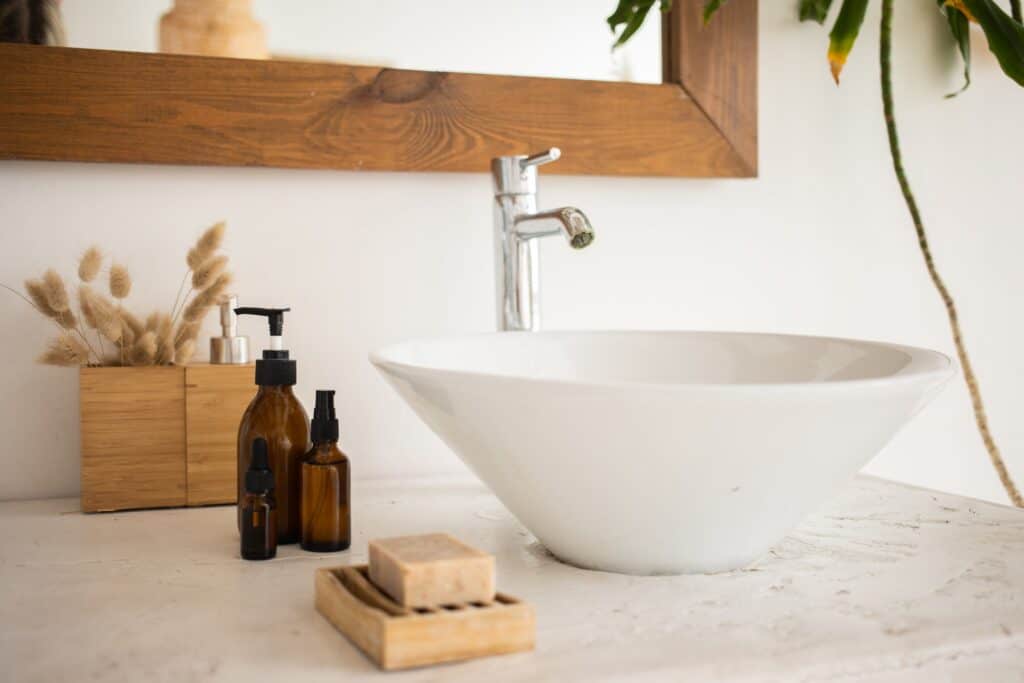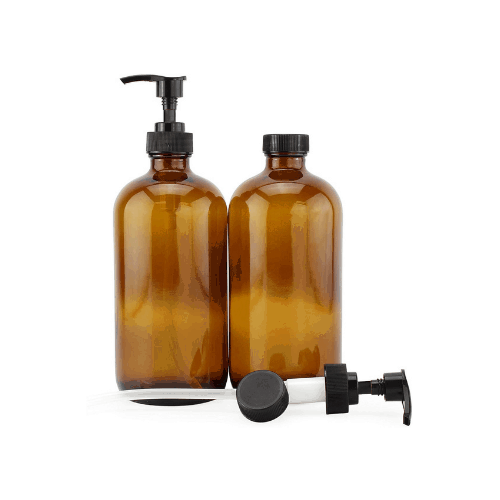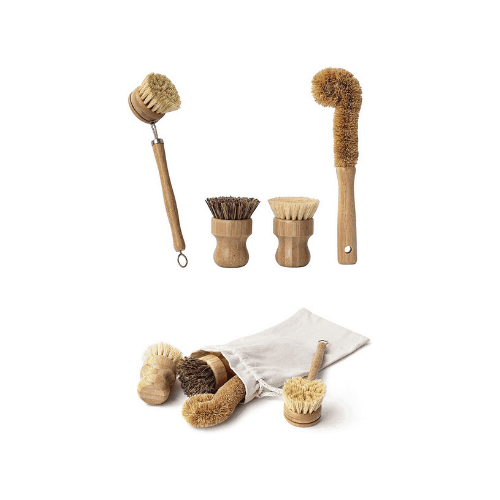[ad_1]
Learning about toxins and how they creep into seemingly every crevice of our lives is overwhelming.
You need:
- Reliable information
- The skills to find toxin-free products
- Buy-in from your family
- To make lifestyle changes
Meanwhile, you’re wondering why? Why isn’t there more urgency (or awareness) from governments and suppliers to protect the public from these harmful chemicals?
It’s a mystery to me!
With these barriers, it’s understandable why going toxin-free is put on the back burner. The too hard basket. At the bottom of the to-do list.
Being a mindful consumer, whether it’s toxins, sustainability or cruelty-free, is all a big pain in the ass.
My wife (girlfriend at the time) Maša sold me, no made me, get on the toxin-free living train from the moment we moved in together in 2011. I didn’t care much for it.
I was more horrified at the prices of organic items and sceptical that these “natural” cleaning products would remove stubborn ketchup stains or whether these “natural” deodorants would do anything for my odour after a 2-hour basketball scrimmage.
But over a decade into a toxin-free lifestyle, I’m nothing but grateful to Maša for significantly reducing our exposure to these toxins.
And as someone resistant, doubtful and more concerned about price than my health, I can tell you that:
- Transitioning to toxin-free is difficult at first, but everything will become second nature a couple of years in.
- You’ll become more aware of your sensitivities to toxins, motivating you to sustain your toxin-free behaviour.
- While it’s generally more expensive to buy natural products, you’ll find ways to reduce costs significantly.
Being toxin-free can be easy and part of your family’s lifestyle. Ultimately, this is your journey, but I’ve written this guide to help you save time by taking small actionable steps towards toxin-free living. But before we begin, let’s define some terminology.
This post may contain affiliate links, for which we earn a small commission at no additional cost to you. Read our full disclosure.
What’s a toxin?
A toxin is any substance that has adverse effects on humans, animals, plants, or other organisms. Many toxins are poisonous substances that cause harm when ingested or absorbed through the skin.
Some toxins are naturally occurring chemicals found in food and water. Other toxins are artificial chemicals that are produced for industrial use. The most common human-made toxins include lead, mercury, arsenic, pesticides, and radiation.
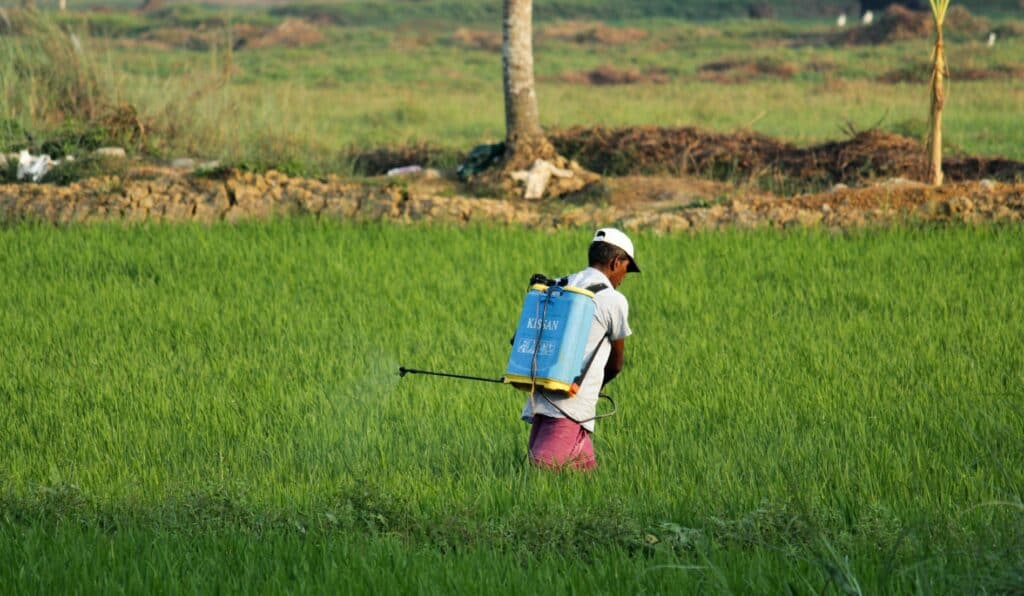

Suppliers use toxins to deliver “better” performing products. For example, a more potent weed killer, bug spray, or longer-lasting perfume. Or longer lasting and more resilient fruit and vegetables.
What is a non-toxic lifestyle?
Toxin-free living, also known as chemical-free living, is when you live in a way that reduces the number of toxins you consume. The average person is exposed to millions of toxins daily. These include things like cleaning products, cosmetics, and personal care items.
Toxins have been linked to cancer, asthma, heart disease, diabetes, obesity, and other health issues. Toxins also have a detrimental impact on the planet and animals.
But if you’re reading this, you likely already know the devastating impacts of toxins.
While you can’t eliminate your toxin exposure, there are plenty of ways to reduce toxins in your life which we’ll explore in the rest of this article — starting with deciphering labels and supply chains.
Product labelling and certifications
Fortunately, folks are becoming more educated or at least interested in understanding what’s in the products they’re bringing into their homes. Brands know this and use words like natural, organic and biodynamic around to sway us to purchase their products.
But many of these brands deceive us with greenwashing terminology, so we need to be sharp.
Next, I’ll explain common phrasing used when trying to find toxin-free products. This is perhaps the most crucial section of this article, as you can apply the learnings to any product category.
What is biodynamic?
Biodynamic farming is a form of organic agriculture that seeks to balance nature’s cycles with human needs. The practice includes composted manure from animals raised on the farm, crop rotation and other methods designed to minimise environmental damage.
The term “biodynamics” was coined in the 1920s by Rudolph Steiner, founder of Waldorf schools, who believed that the laws governing the natural world were also at work in the universe of humans.
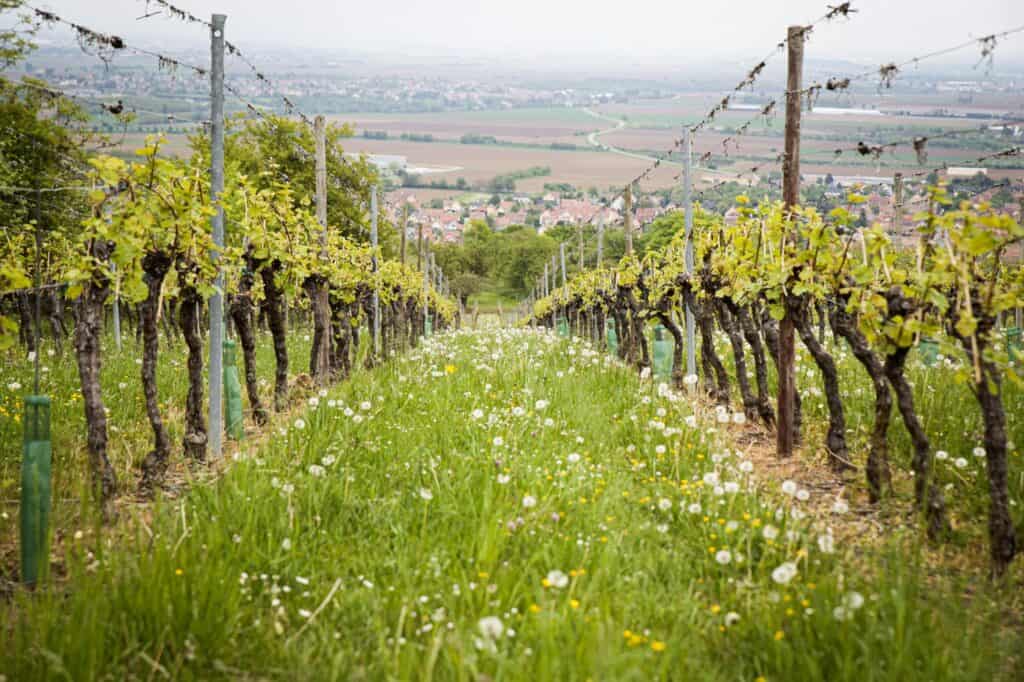

Biodynamic is regarded as the most sustainable form of agriculture that excludes artificial pesticides and fertilisers.
Demeter is the main certifying body established in over 50 countries.
What is certified organic?
You’ve likely heard or seen labels like COMOS, USDA or ACO. These are institutions that regulate certified organic products on the shelves.
According to these bodies, there are two levels of certification for organic products:
- Certified organic: 95% or more of the ingredients are certified organic.
- Certified organic ingredients: certified organic ingredients are more than 75% but less than 95%.
To maintain certified organic status (generally on an annual basis), brands must provide clear and accurate labelling for consumers to make informed decisions.
To become a certified organic product you must be free of:
- Non-organic products derived from animals
- Petrochemicals and other synthetics
- Fragrances of non-organic or synthetic origin
- Potentially harmful preservatives
- Colour components of non-organic or synthetic origin
- Ethoxylation and propoxylation
- Polyethylene glycol (PEGS)
- Animal testing
- And more
Different certifiers may have slightly different criteria based on your country and region.
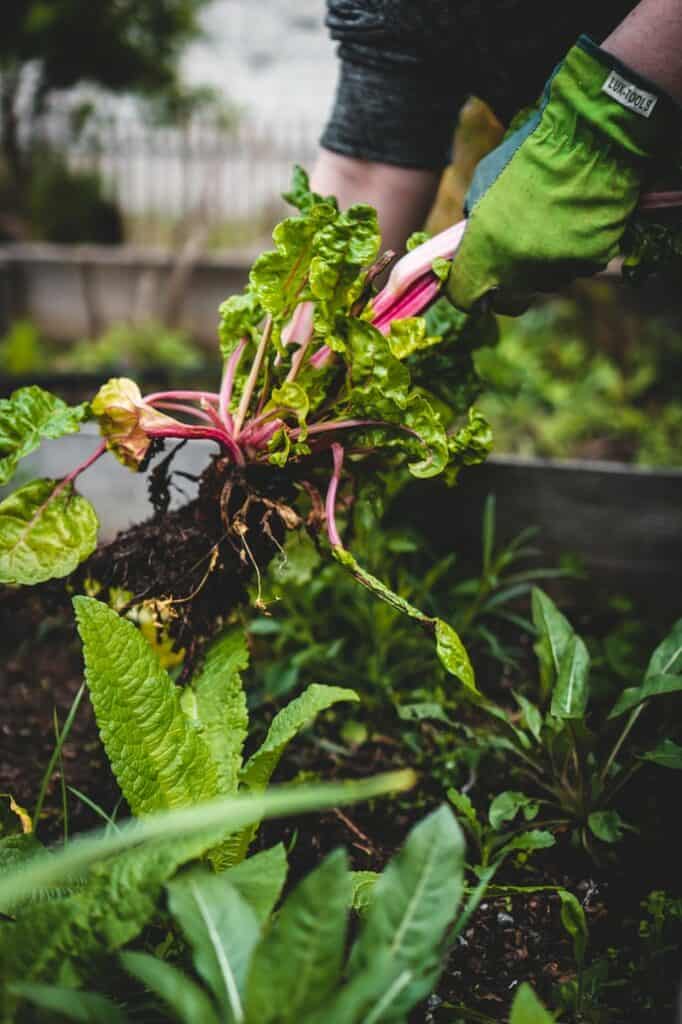

What is natural?
Natural refers to products made from “naturally” occurring ingredients and no unnatural human-made components. Naturals can also include products made with organic ingredients but aren’t certified.
This is the hardest category to define, because brands throw “natural” onto labels to greenwash consumers into buying. At the same time, many admirable toxin-free products are natural and organic but aren’t certified.
What’s the difference between natural and organic?
Aren’t natural products just as safe as organic products? Unfortunately, not. These terms get used interchangeably. However, they represent entirely different approaches.
For example, in the United States, both the USDA and the FDA don’t have rules or regulations for products labelled as “natural”. As a result, brands throw “natural” onto product labels despite having heavily processed ingredients.
In contrast, certified organic is the most heavily regulated ingredient and practice system. According to the Organic Trade Association (OTA), certified organic guarantees no toxic synthetic pesticides, synthetic herbicides, or chemical NPK fertilisers are used in production, and no antibiotics or growth hormones are given to animals.
How to prioritise certifications for toxin-free
As a rule of thumb, biodynamic and certified organic are your best choices for toxin-free items.
After that, look for natural products with organic ingredients, or at least a portion of organic ingredients.
If it’s not organic, then look for natural, chemical-free products.
To summarise:
- Best option: Biodynamic/certified organic
- Second best option: Natural with organic ingredients
- Third best option: Natural with chemical-free ingredients
- Fourth best option: Natural with low toxin-exposure
Resources for label reading
Putting pressure on yourself to learn every ingredient of every product you consume is a surefire path to overwhelm.
You’ll learn more as you get further in your toxin-free journey, but at the beginning, rely on simple principles and useful resources to help you make efficient decisions — for example:
Avoid E numbers (where possible)
The 3 digit numbers you see on product labels represent ingredients or toxic chemicals for a particular additive. These numbered components enhance flavour texture or prevent a product from spoiling.
However, we can use natural additives to achieve, if not the same, at least a smilier result. For that reason, we tend to stay away from products with these numbers.
Although admittedly, I like to indulge in some plant-based ice cream brands knowing that they have additives in them.
Websites and apps
For my friends in America (and abroad), I suggest you get familiar with the Environmental Working Group (EWG). They’re a group of researchers who constantly provide studies and findings on toxin exposure in consumer goods.
EWG also has a companion smartphone app, Skin Deep, that you can refer to when researching the safety of products you’re considering.
Along those lines, we’ve used a paid smartphone app called Chemical Maze (originally a book) since 2014. You can type in any unknown ingredients, and if it’s in the database, Chemical Maze will give you a breakdown of the component, including how safe it is to consume.
Another app I’ve heard good things about is Think Dirty for iOS.
For now, leveraging these resources will be enough to get you from point A to point B without having to get a PhD in chemistry.
Our toxin-free philosophy
Before you race into swapping all of your products, it’s essential to slow down and develop a framework for an approach to toxin-free living.
For my wife and me, 3 principles guide our decisions:
- Keep your items minimal: one of the easiest ways to reduce your toxins is to reduce the number of things you own. For instance, rather than replacing all of your non-stick pots with cast iron, perhaps all you need is one quality cast iron skillet. So as you’re going through this process, it’s more about achieving less than seeking more.
- Keep ingredients and materials plant-based: as vegans, we don’t consume animal products. This has faired well when going toxin-free as we use natural products made from plants while avoiding consuming animals pumped with antibiotics.
- Go for eco-friendly: as it turns out, safe products for you tend to also be better for the environment. So there’s a beautiful dual purpose for going toxin-free.
How to reduce toxins in the food you consume
The concept is simple enough. Source locally grown food, in natural environments, within the appropriate season, free from toxic chemicals. However, finding these foods can take some getting used to and is unrealistic for many of us.
Below I’ve listed tips in order of priority and accessibility to start reducing toxins from your food today.
1. Buy organic for the dirty dozen
There are 12 types of fruits and vegetables that contain elevated levels of pesticides, including:
- Strawberries
- Spinach
- Kale, collard and mustard greens
- Nectarines
- Apples
- Grapes
- Cherries
- Peaches
- Pears
- Bell and hot peppers
- Celery
- Tomatoes
If you use any of these ingredients, only get them organic.
Take a photo of the dirty dozen list and refer to it when you’re shopping for groceries. I refer to the EWG website as they regularly update their dirty dozen list. This is an easy win you can implement today on your way to a toxin-free lifestyle.
If you’re interested in learning more about the toxicity of the dirty dozen, check out the video below.
2. Buy produce from your local farmers market
If you’re fortunate to have a farmers market in your area, use them as much as possible. Not only do you support your local economy, but you also get to build a community and get connected with where your food comes from.
Now you’re not going to find stringent regulated labelling on foods at the market, so you’ll have to ask the farmers directly.
Keep your line of questioning causal and straightforward. You don’t want to come across as an interrogation officer.
You want to know:
- Is the food organic?
- Do they spray? If so, with what? Is it natural or artificial?
That’s it. All you’re trying to determine is if the food is organic or chemical-free.
You don’t need to get into soil PH levels, mono-cropping or any of that. I mean, if the farmer is chatty and proud and wants to share their exact process, fantastic! You have even more data behind the food you’re purchasing.
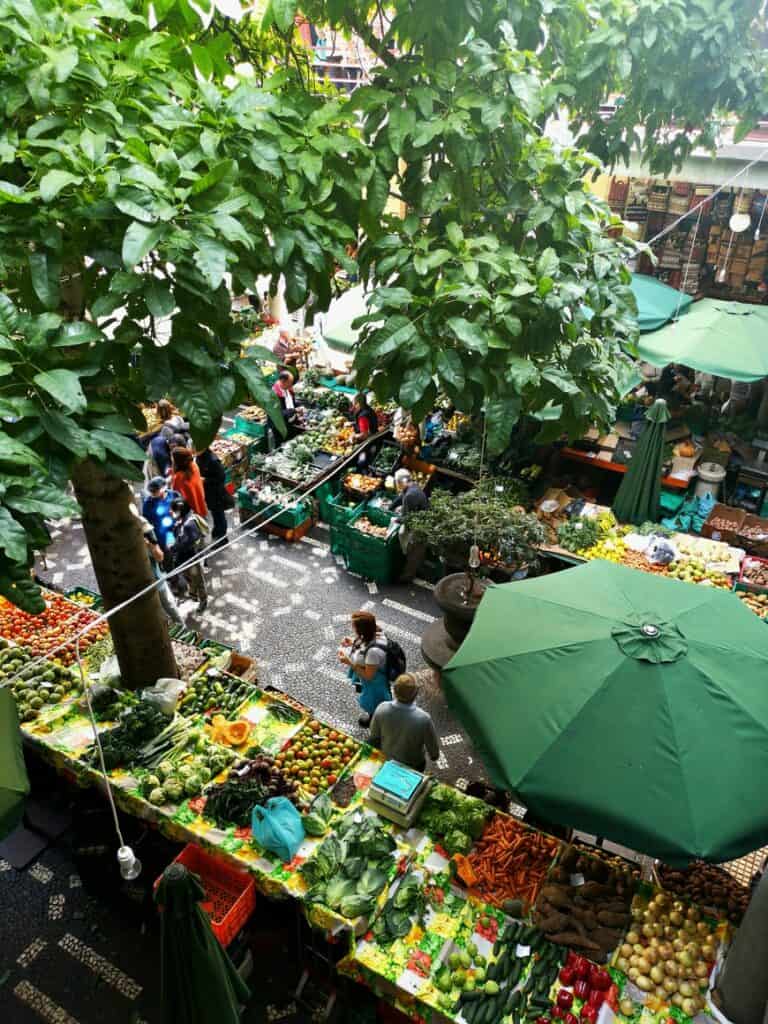

It’s worth noting that non-organic but chemical-free produce tends to be way cheaper than certified organic versions in the supermarket. So you’ll often make significant savings at the farmers market. Set the alarm and get there early before you’re favourite suppliers sell out!
Lastly, once you screen the farmers you can trust, you don’t have to overthink about toxins moving forward as you’ve got a source. Your only concern will be the availability of produce.
3. Buy food in bulk
The inconvenient truth is that toxins are leaking through the plastic packaging of even certified organic foods. One way to get around this is to buy your produce in bulk, either online or at your local bulk foods store (again, if you have one).
This way, you can control the packaging and choose a brown paper bag or, better yet, bring your own jars to top up.
It pays to start calculating your food by weight so you can compare prices with the grocery store.
Your situation will likely be different. We’ve found that organic oats, teas, herbs, and spices tend to be cheaper in bulk than pre-packaged. But again, once you’ve made the comparison, you won’t have to do it again.
For example, we know exactly what foods we get from the bulk store versus the supermarket, the independent grocer, and the farmers market. We’ve factored in the best prices the most quality produce to optimise our toxin-free food shopping.
4. Grow your own food or source food from your local community
If you want complete certainty about the safety of the foods you eat, start a veggie garden.
Don’t have the space? Then join your local community garden.
Once you start growing food, things can get exciting. For instance, you can trade produce with other backyard growers in your area. Or you can naturally preserve your food for future use.
If you have veggie delivery boxes in your area, that could be another great option to access toxin-free produce regularly.
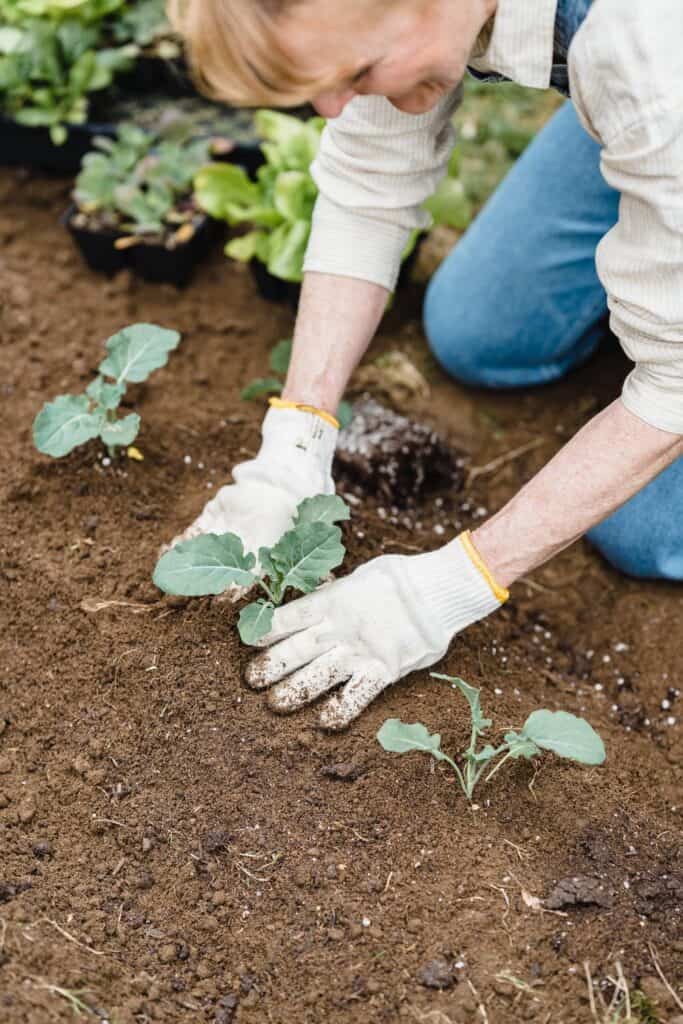

Toxin-free personal care and cosmetics
Your skin is your largest organ and for every hair on your body, there’s an associated pore — meaning your skin is also porous and can absorb toxins.
Yet, we’re constantly applying different chemicals to our bodies, whether it’s lotions, makeup, shampoo, or even sunscreen.
We’ve published an article on what ingredients to avoid in your skincare products, so I suggest you pause and read that post for more context.
But in terms of priorities, here’s what I’d suggest you focus on.
Toothpaste
We also brush our teeth a few times a day, so it’s an easy switch to go for a natural toothpaste for your family.
Fortunately, there are growing options of natural toothpaste on the market that keep your teeth clean without the toxins.
Deodorant, cologne and perfume
Conventional fragrances are full of toxins, and this is an area you want to act on quickly.
There are (rightfully) a few hang-ups here with making the switch to natural fragrances. For one, we often think we need to give up our iconic scent. The scent that we’ve often used for years or played a role in attracting your soulmate.
I get it. Your scent is very personal, even iconic. But you can get unique natural perfumes and colognes with outer worldly scents that will make up your new identity. We recommend anything from One Seed Organic Perfumes. We personally know the founder, Liz Cook and have been satisfied customers for many years.
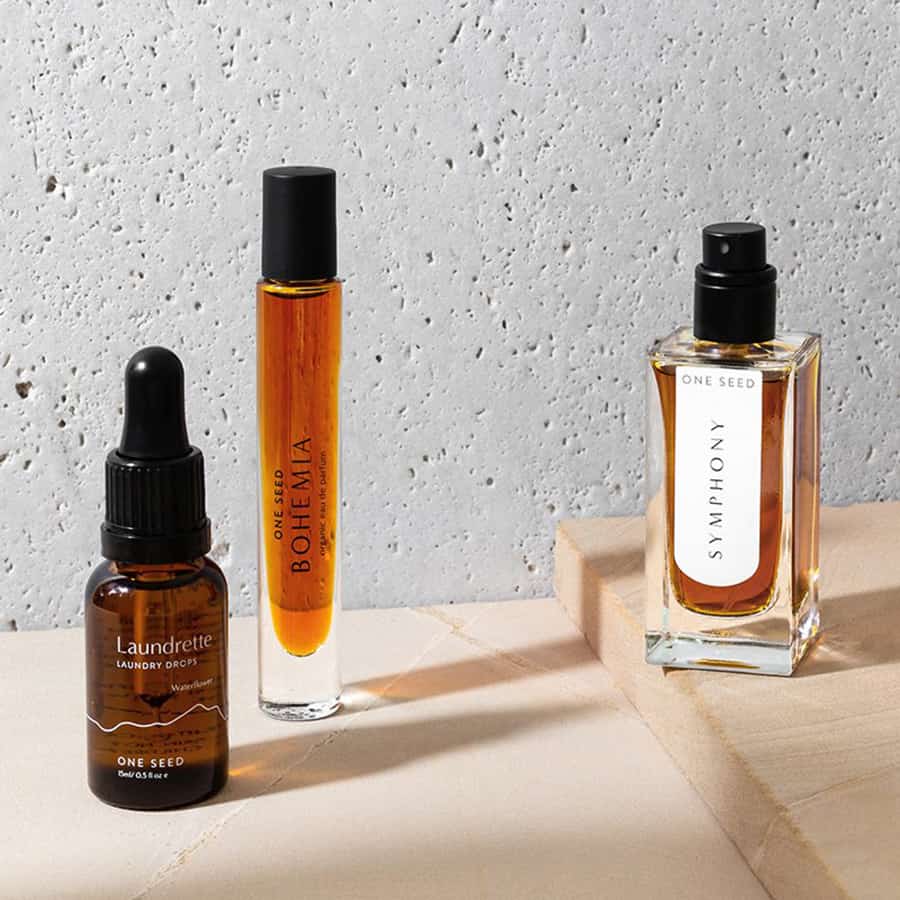

For many, deodorant is a product we use daily. It’s essential to maintain hygiene when you’re out and about and, of course, through exercise.
I sweat A LOT, so I was super doubtful about finding a natural deodorant that worked. And it took a few years to find a solution. I’ve been using Black Chicken’s deodorant paste for many years now, and it’s the most essential personal care item I buy.
Makeup
One of the easiest ways to reduce toxins in your makeup is to reduce the amount of makeup you use. But when you do apply, there are plenty of high-performing natural alternatives which you can find in our collection of recommended beauty products.
Hand and body wash
Switching to organic hand and body wash is another example of low hanging fruit. It’s even likely your local supermarket will have legitimate natural options at a reasonable price.
Lotions
It’s simple to switch out your conventional body and face lotions/balms for organic alternatives.
One area that’s more challenging is sunscreen. This will require some more digging as the protective formula in sunscreens tend to have toxins in them — but this natural sunscreen lotion is one we’ve referred to over the years.
Hair
Shampoo, conditioner, hair colour, beard gels are all routine products in our lives. The thing to remember here is to avoid hair sprays and artificial hair dyes as much as possible. Otherwise, you won’t have much issue finding natural hair care items.
Nice-to-haves
These products are not as essential to get toxin-free, but if you’re at the point of refining your transition, then it’s worth pursuing. These items include:
- Floss
- Earbuds
- Wipes
- Toilet paper (fragrance and bleach free)
Find toxin-free beauty services
Going toxin-free goes beyond your home. You also need to reconsider your go-to beauty services like:
- Hair salon/barber
- Hair removal (waxing)
- Nails
- Facials
The first thing is to ask whether your current providers are open to using natural products if they don’t have them already. If they’re not willing to budge, then it’s time to find providers who are toxin-free. Luckily, more beauty services are adopting natural products into their offering.
Toxin-free cleaning
Generally, it’s pretty challenging to find organic cleaning products. So you’ll likely need to settle for natural chemical-free alternatives.
The first thing to consider is reducing the number of specific cleaning products you have. For instance, go for a multipurpose cleaner that can be used for mopping detergent, surfaces and toilet and bathroom. We even use our multipurpose cleaner to clean the outside of our car.
Stop using bleach and other potent cleaners. You can get out stains naturally, with even your own formulations.
The rest of your cleaning products are a pinch to swap over. There’s a bunch of laundry soaps, fabric softeners, dishwashing detergent etc.
You can also find some powerful plant-based hand sanitisers to use where you’re out and about.
Lastly, review your cleaning utensils like your sponges and brushes. Conventional items are typically made with plastic, so you want to find natural alternatives.
Toxin-free kitchen
Between non-stick pans and plastic food storage, there are a bunch of toxins to be mindful of in your kitchen.
This is a pretty loaded topic, so I’ll refer you to our thorough step-by-step guide on how to create a zero-waste kitchen. We’ve included eco-friendly and toxin-free product suggestions for all areas of your kitchen.
Other tips on how to go toxin-free
At this point, we’ve covered all the fundamentals for going toxin-free across food, personal care, cleaning and kitchen. Below is a summary of other areas to consider switching over to natural.
- Replace tap water with filtered water. We recommend the UltraStream Benchtop Water Filter.
- Review your pet cleaning products and find a groomer that uses natural cleaners.
- Be careful when walking with kids and pets in local parklands, as toxic weed killers are often used.
- Try to source fashions pieces using natural and organic fabrics. We have a detailed collection of recommended brands.
- Try to reduce your use of pharmaceutical drugs and go for natural alternatives where possible.
- Radiation from electronic devices can create toxin exposure, especially in close contact with your skin. So try to be hands-free when talking on the phone, don’t put your laptop directly on your lap (wedge a pillow in-between), and avoid keeping your phone in your pocket.
- Keep your doors and windows open for air circulation. Dust and vacuum regularly and invest in plants to help purify the air in your home.
- Use natural plant-based candles. Here’s a great all natural alternative!
- Switch to organic bedding and towels (Bhumi is our go-to brand) and invest in organic mattresses.
Toxin-free living made easy
Going toxin-free doesn’t have to be insanely overwhelming. The first step is to learn how to decipher labels and ask the right questions. Honestly, once you have those tools, your transition becomes much easier.
You’ll get the quickest results by focusing on food and personal care first. Then slowly transition everything else one step at a time.
Each time you make a switch to a natural alternative, it’s worth celebrating. You’ve made your family a little bit safer with that decision. That’s huge!
What about you? Do you have any tips or struggles with going toxin-free? Share your experiences in the comments below.
[ad_2]
Source link
